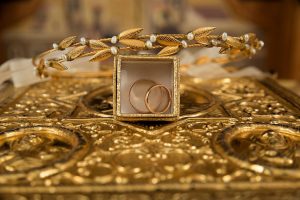
Precious metals have gained popularity in the past few years and for good reason. Nowadays, they have become a famous investment option for private investors and large institutions because of their long-term store of value.
Some people see them as a safe haven against inflation, while they gave others opportunities to make money as the value of gold or silver tends to go up over time. You can see more info about inflation on this webpage.
The fact that there is more than one precious metal might make it difficult for a beginner to decide on which one to invest in. Hence, our job in this article is to help you learn more, with a basic guide to investing in precious metals. We will look at some key facts you need to know regarding gold, silver, and platinum.
There are a few different ways to invest in precious metals. One can purchase metals such as gold, silver, platinum, palladium coins, or bars. Another option is to invest in ETFs or mutual funds that track the prices and movements of precious metals in the market.
Precious metals can be volatile, so doing your research before investing is essential. This guide will help you understand the basics of investing in precious metals and how to choose a suitable investment for you.
There are many different types of metals that can be traded on the commodities market. Precious metals, such as gold and silver, are often seen as a safe investment during times of economic turmoil. Industrial metals can also be traded on the commodities market. Prices for metals can fluctuate based on several factors, including global demand, production costs, and geopolitical events.
How do you Invest in Precious Metals?
When it comes to investing in gold or silver, there are a few different ways that you can go about it. You can buy coins and bullion, or you can invest in mining companies or ETFs that are backed by gold. Companies like Goldcore will also guide you on the storage and rates when you buy.
These companies have a trustworthy reputation in the industry, and they can be a good starting point when you want to get exposure to gold. Read the Cayman Financial Review for a more in-depth look at how Goldcore operates and learn more about its pros and cons. Generally, these are the ones who have been serving high-profile clients for more than twenty years, and they can assist you with any questions that you have about buying and selling.
Forms to Know About

Physical Bullion
If you decide to purchase physical metals, you have a few different options. You can buy coins, bars, or even jewelry. However, it is essential to remember that not all of these options are pure investments. You might want to get the bars with a purity of 0.999% or 0.9995% gold so they can be a part of your individual retirement accounts or jewelry that is at least 18K so their value can increase in the future.
Some of the benefits that you can enjoy when owning physical bullion are easy transfers, ownership of the commodity is more direct, and you’ll be able to buy them in smaller amounts. However, they can be taxed as collectibles with CGT rates of up to 28%. The ones you’ve held for less than a year are generally considered regular income.
Mining Companies and ETFs
If you would rather not deal with the hassle of storing physical bullion and coins, you can always invest in companies that mine them instead. There are several different mining companies around the world, and many of them are publicly traded. This means that you can easily purchase shares in these companies and benefit from their success.
Alternatively, you could invest in an ETF that focuses on precious metals. See more about ETF when you click this site: https://www.fool.com/investing/how-to-invest/etfs/. These funds typically hold a variety of different mining companies and other types of investments related to precious metals. This can provide you with a more diversified way to get exposure to this asset.
Some of the advantages that you can enjoy with the exchange-traded funds are improved liquidity and convenience when buying and selling. They usually trade at the net value of gold.
However, some entrepreneurs don’t generally find the ETFs to be attractive investments because they lack the beauty of the physical coins and bars. There’s also the counterparty risk to be considered if the other defaults on their obligations. Investors generally don’t retain full ownership with the ETFs, and they might not be able to access their assets in the event of disasters or sudden economic collapse.
Safety Factors to Consider
When it comes to investing in precious metals, there are a few safety factors to keep in mind. Here are a few tips to help you make the safest investment possible:
- Do your research. Understand the market and know what you’re investing in. Don’t take anyone’s word for it, and always be ready for any problems that you may encounter down the road.
- Diversify your portfolio. Gold and silver should only be a small part of your overall investment strategy. It’s still best to lean on stocks and mutual funds because you get a lot of returns every year.
- Consider storage options carefully. You’ll need to decide carefully when it comes to third-party storage services. Get the benefits of the ones that were in the market for decades.
- Be prepared for volatility. The price of precious metals can fluctuate wildly, so be prepared for ups and downs.
- Know when to sell. Don’t get attached to your holdings, and be willing to sell when the time is right.
By following these tips, you can help ensure that your investment in precious in gold and silver bullion is as safe and successful as possible.
Whether you decide to invest in paper assets backed by gold or the physical bullion, gaining significant exposure to the precious metals can protect you in the long run. Most prudent investors turn to gold and silver because they are considered safe investments and provide a hedge against inflation.







